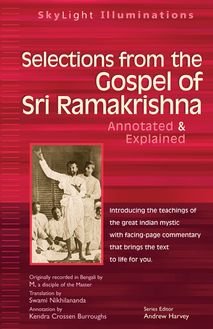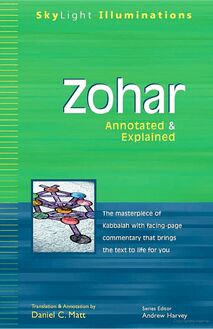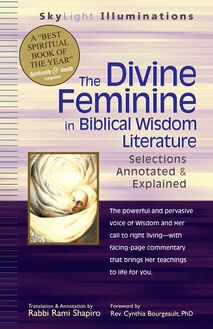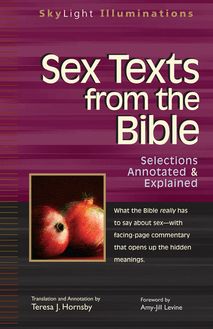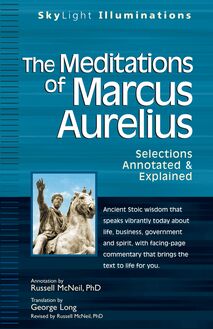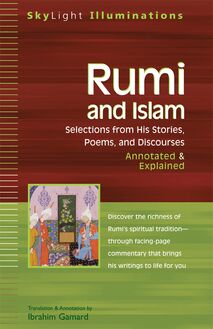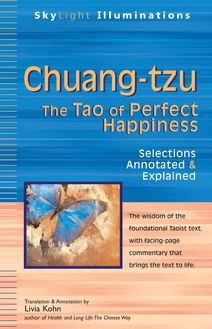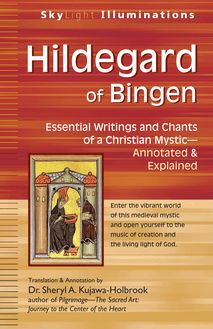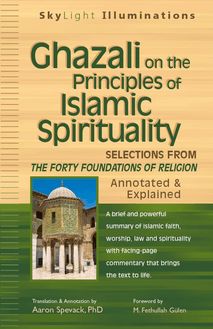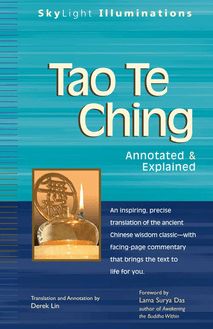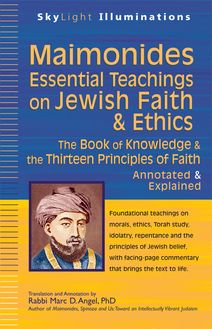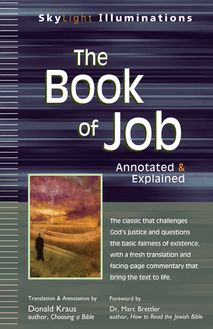The Gospel of Philip , livre ebook
67
pages
English
Ebooks
2012
Vous pourrez modifier la taille du texte de cet ouvrage
Obtenez un accès à la bibliothèque pour le consulter en ligne En savoir plus
Découvre YouScribe en t'inscrivant gratuitement
Découvre YouScribe en t'inscrivant gratuitement
67
pages
English
Ebooks
2012
Vous pourrez modifier la taille du texte de cet ouvrage
Obtenez un accès à la bibliothèque pour le consulter en ligne En savoir plus
Publié par
Date de parution
24 août 2012
Nombre de lectures
3
EAN13
9781594734793
Langue
English
This ancient Gnostic text can be a companion for your own spiritual quest.
The Gospel of Philip is one of the most exciting and accessible of the Gnostic texts found at Nag Hammadi in Egypt in 1945. The source of Dan Brown’s intriguing speculations about Mary Magdalene in his best-selling novel The Da Vinci Code, the Gospel of Philip draws on ancient imagery—the natural world, the relationships between women, men and family, the ancient distinctions between lord and servants, free people and slaves, and pagans, Jews and Christians—to offer us insight into the spiritual interpretation of scripture that is at the foundation of Christianity.
The Gospel of Philip: Annotated and Explained unravels the discourses, parables and sayings of this second-century text to explore a spiritual, non-literal interpretation of the Bible. Along with his elegant and accurate new translation from the original Coptic, Andrew Phillip Smith probes the symbolism and metaphors at the heart of the Gospel of Philip to reveal otherwise unrecorded sayings of Jesus, fragments of Gnostic mythology and parallels to the teachings of Jesus and Paul. He also examines the joyful imagery of rebirth, salvation and mystical union in the bridal chamber that was the pursuit of Christian Gnosticism.
Now you can experience this ancient Gospel even if you have no previous knowledge of early Christianity or Gnostic thought. This SkyLight Illuminations edition provides important insights into the historical context and major themes of the Gospel of Philip, and gives you a deeper understanding of the Gospel’s overarching message: deciphering our own meaning behind the symbols of this world increases and enriches our understanding of God.
Publié par
Date de parution
24 août 2012
Nombre de lectures
3
EAN13
9781594734793
Langue
English
For Tessa Finn and Dylan Smith
Contents
Foreword by Stevan Davies
Introduction
A Note on the Translation
The Gospel of Philip
Annotations
Notes
Suggestions for Further Reading
About the Author
About SkyLight Illuminations
Copyright
Also Available
About SkyLight Paths
Send Us Your Feedback
Foreword
Stevan Davies
From the time of the Gospel of Thomas, where we hear that the Kingdom of the Father is already spread out on the earth, and people aren t aware of it (saying 113), continuing on into the world of Sufi Islam and other mysticisms today, spiritual people have sought to see underneath and beyond appearances, to find the Divine hidden here. The Gospel of Philip is in this tradition, one where the world has become the aeon and the aeon is fullness for him É hidden in a perfect day and a holy light (section 107).
The author of the Gospel of Philip is fascinated by the occult, by hiddenness, and by the secrets that lie behind and beneath appearances. The Gospel of Philip finds hidden meaning in the world, in the aeon beyond and within the world, and in the sayings of Jesus and the sacramental language of the Gnostic Christian church. Many of the passages in this text are about words, the secret meanings of words, the allegorical significance of parables, and the power of divine names. The author seeks to show the hidden meaning behind what Hinduism calls the names and forms. In section 68 we hear of three physical locations for sacrifice in Jerusalem and how each one allegorically represents an aspect of the Christian faith. In section 80, the only one to mention the apostle Philip, that apostle tells a short tale that is immediately allegorized to explain its secret meaning. We hear in section 105 that while at present we have the things of this creation, behind those appearances the mysteries of truth are revealed in type and image. We read in section 59 that truth did not come into the world naked, but came in types and images, an idea that can be traced to the great philosopher Plato. This Gospel is not just a set of doctrinal truths laid out on the page; it is a set of spiritual exercises helping to train readers to take types and images and find truth within them.
In this Gospel the world is a text (a very postmodern idea from this second-century document), and the duty of the Christian is to read through its allegories to the truth it hides. The Gospel of Philip shows how to interpret the world textually, advocating a hermeneutic approach to spirituality and to reality itself. It argues that there are names and realities behind those names, and that the world itself is an allegory, a set of manifest appearances that we can interpret like a text to reveal deeper and more complex meanings. We must go beyond the types and images to the ultimate source that dwells in them now.
Of all the aspects of the world, sexuality is the one to which most people, including the author of the Gospel of Philip, give most of their attention. The Christianity that became the standard church tended to regard sexuality as akin to the demonic. But the Gnostic Christianity of the Gospel of Philip finds sexuality to be akin to the Divine. We read about a sacramental sexual union between the divine and human in a bridal chamber understood to be the celestial realm. We are told that everyone who enters the bridal chamber will kindle the light.É If anyone becomes a son of the bridal chamber, he will receive the light (section 107).
Human mythic history is embedded in a sexual metaphor. Sections 70-71 discuss how it was that Adam (soul) has a companion, Eve (spirit), with whom he was united. But Eve separated from Adam and death came into being. Christ came to correct the separation that has existed from the beginning, by uniting the two together in the bridal chamber; there spirit unites with the spirit, the Word with the Word, and so forth. Those who are united sexually in the bridal chamber of the higher reality are able to become human, spirit, Word, and light. If you become one of those from above, it is those from above who will rest on you (section 96).
The ritual of the bridal chamber seems to empower a person to give birth to a higher Self, to become what is envisioned in the light of the rite. According to one of the most striking passages in the Gospel of Philip, In the world of truth, if you see anything of that place you become one with what is there. You saw the spirit and you became the spirit; you saw the Christ you became the Christ.É In that other place you do see yourself-and you shall become what you see (section 38). This is powerful writing meant to provide a path toward understanding, to guide toward experience.
The Secret Book of John, another Nag Hammadi text, conveys the fundamental Gnostic myth of creation by telling the story of humankind s imprisonment in a dark world apart from the true God. The Gospel of Philip is based on this myth and occasionally refers to important aspects of it. For example, we hear about attempts by the rulers of this world to deceive humankind, and of the holy spirit s turning the tables on those rulers. Through her deception, the holy spirit accomplished everything through them, as she wished (section 12). The great difference between the Secret Book of John and the Gospel of Philip is that while the former does eventually end on a positive note, showing humanity saved through the power of God s providence, it is mainly a rather gloomy account of the fall and imprisonment of God s wisdom in this lower place. The Gospel of Philip, in contrast, is filled with rejoicing and happiness at the salvation through Christ that already has taken place.
We read of the wonders of the rite of the bridal chamber and the gift of the holy spirit that cannot be taken away. We read of the future resurrection that depends upon our being raised already now, and how we will surely escape from this world in the future because we have been given the rites and the light that will guarantee our perseverance into the higher world. In this world we receive the truth in types and images; in the higher world we will see it face to face. The Gospel of Philip speaks of and to people who have been and who will be saved from the world; this Gospel is what the Gnostic religion of the Secret Book of John became after a generation or two of integration with Christianity.
The Gospel of Philip tells us that the truth cannot be found through words alone. Rather, words and the world are types and images pointing toward the truth. Therefore neither my comments here nor Andrew Phillip Smith s valuable, detailed discussion of the Gospel of Philip should substitute for your own decipherment or for your own engagement in getting beneath the types and images to the reality that lies behind them. Like the Gospel of Thomas and, to a degree, the Gospels of Mark and John, the Gospel of Philip is a spiritual exercise, a collection of riddles and enigmas that should enable us to move above the level of the things that are revealed in this world, to the level of the things that are hidden. Ideally, eventually, through our own effort, the perfect things will open to us. Along with the hidden things of truth, the holies of holies will be revealed, and the bridal chamber will invite us in (section 105).
Introduction
The Gospel of Philip is one of the most exciting of the Gnostic texts found in Nag Hammadi, Egypt, in 1945. In comparison with the Gospel of Thomas, which has generated a huge amount of scholarly and popular interest, the Gospel of Philip has, until recently, received relatively little recognition. The Gospel of Thomas is set apart from all of the other texts in the Nag Hammadi library by its strong claim to be as old as the gospels in the New Testament. Many people have read or at least have some familiarity with the New Testament, and the roots of Christianity in the first century and the figure of Jesus fascinate people in a way that the development of Christianity in the second century does not.
The Gospel of Philip cannot claim a first-century date. It belongs to the same second- and third-century period as most of the Gnostic Nag Hammadi texts, but its contents are a good deal more accessible than many of them. Much of its imagery is also found in the New Testament, or in the Gospel of Thomas for that matter. It draws on the imagery of the natural world, the relationships between women, men, and family, and the ancient distinctions between lords and servants, between free people and slaves, and between pagans, Jews, and Christians. The Gospel of Philip represents a genuinely spiritual development of Christianity that uses the same language and sees itself as expressing the same truths as the teachings of Jesus and Paul.
The Gospel of Philip s major claim to fame is its mention of Mary Magdalene as the companion of the Savior (section 48). This has been the subject of a good deal of speculation concerning Jesus s marital status, which has culminated in the extraordinarily successful novel The Da Vinci Code. As many critics have pointed out, author Dan Brown s claims in the novel, though fascinating, do not hold up to historical analysis. There is no reason to consider that the Gospel of Philip s references to Mary Magdalene and Jesus are in any way historical. I am sure that the compiler of the Gospel of Philip would have considered historical enquiry to be very far from the purpose of these writings. Yet the Gospel of Philip, along with other ancient texts, does assign a positive and, in many ways, preferential role to Mary. Although it falls rather short of delineating the family tree of Jesus s descendants, or of narrating Jesus s nuptial arrangements, the Gospel of Philip has a refreshingly unembarrassed attitude to sexuality, and in Philip the coupling of the bride and bridegroom represents the culmination of spiritual development.
The hero of The Da Vinci Code is a profes
